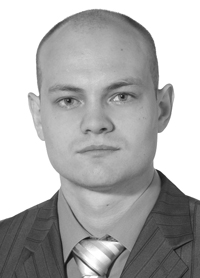COORDINATION TRAINING SYSTEM FOR ANNUAL TRAINING CYCLE OF ELITE BLIND BIATHLETES
Keywords:
coordination training, annual training cycle, elite biathletes, blind sports.Abstract
Objective of the study was to test and analyze benefits of a coordination training system for elite blind biathletes in an annual training cycle.
Methods and structure of the study. The coordination training system was tested at Snezhinka Winter Sports Federal Training Center in September 2020 to June 2021. We sampled for the study the elite blind biathletes (n=7, including 3, 2 and 2 Class B1, B2 and B3 biathletes, respectively). The blind biathlon sample training was complemented by the coordination training system in 2-week field trainings and other training and competitive periods within an annual training cycle.
Progress of the blind biathlon sample in the annual training cycle was tested in the following three periods: preparatory period; beginner coordination training (CT1) and final coordination training (CT2) ones. The coordination skills were tested by a computerized Stabilan 01-02 stabilometry test system that generates test data with a sampling frequency of 50 Hz per second. The test set included Qualification, Target Shooting and Stability tests that produced the following tests data: BMC (body mass center) total (mm); confidence ellipse size (mm2); equilibrium function quality (%); movement redirecting sharpness ratio (%); front/ back/ left/ right deviation (mm); and the total movement zone (mm2). The sample was tested in a relatively quiescent state, with the test data processed by a standard mathematical statistics toolkit. We used a nonparametric Wilcoxon test for related samples – since the sample was very limited.
Results and conclusion. The new coordination training system for elite blind biathletes in an annual training cycle was tested beneficial due to the practices centered on the integrated coordination skills in the preparatory period; followed by the skiing balance and coordination skills improvement practices in the beginner coordination training period (with the shooting skills given a lower priority in this period); and a special focus on the shooting accuracy improvement practices in the final coordination training period (with the skiing coordination skills given a lower priority in this period).
References
Zdanovich O.S., Zebzeev V.V. Model nauchno-metodicheskogo soprovozhdeniya podgotovki sportivnogo rezerva v zimnikh vidakh sporta [Model of scientific and methodological support of sports reserve training in winter sports]. Teoriya i praktika fiz. kultury. 2020. No. 3. pp. 82–84.
Issurin V.B. Podgotovka sportsmenov XXI veka: nauchnye osnovy i postroenie trenirovki [Training of athletes in the XXI century: scientific foundations and design of training]. M.: Sport publ., 2016. 464 p.
Kasatkin P.N., Balykina-Milushkina T.V. Puti razvitiya stressoustoychivosti u biatlonistov v sporte vysshikh dostizheniy [Ways to Develop Stress Resistance in Elite Biathletes]. Teoriya i praktika fiz. kultury. 2013. No. 5. pp. 35–38.
Muraleeva E.V., Chumakov V.N., Karintsev I.A. Sovershenstvovanie staticheskogo i dinamicheskogo ravnovesiya v strelkovoy podgotovke kvalifitsirovannykh biatlonistov [Actions to build static and dynamic balancing skills in shooting training of skilled biathletes]. Teoriya i praktika fiz. kultury. 2020. No. 3. pp. 21–22.
Golub Y.V., Vorobyev S.A., Baryaev A.A. et al. Psikhofiziologicheskie aspekty formirovaniya standartov sportivnoy podgotovki v sporte slepykh [Psychophysiological aspects of formation of blind sports training standards]. Adaptivnaya fizicheskaya kultura. 2018. No. 3 (75). pp. 25–28.
Tuzlukova M.D. Issledovanie kachestva trenirovki i vosstanovleniya paralimpiytsev lyzhnikov s porazheniem zritelnogo analizatora v sravnenii s olimpiytsami po metodike Firstbeat SPORT [Study of quality of training and rehabilitation of Paralympic skiers with visual impairment compared to Olympic athletes using Firstbeat SPORT method]. Adaptivnaya fizicheskaya kultura. 2016. v. 66. No. 2. pp. 5–7.


